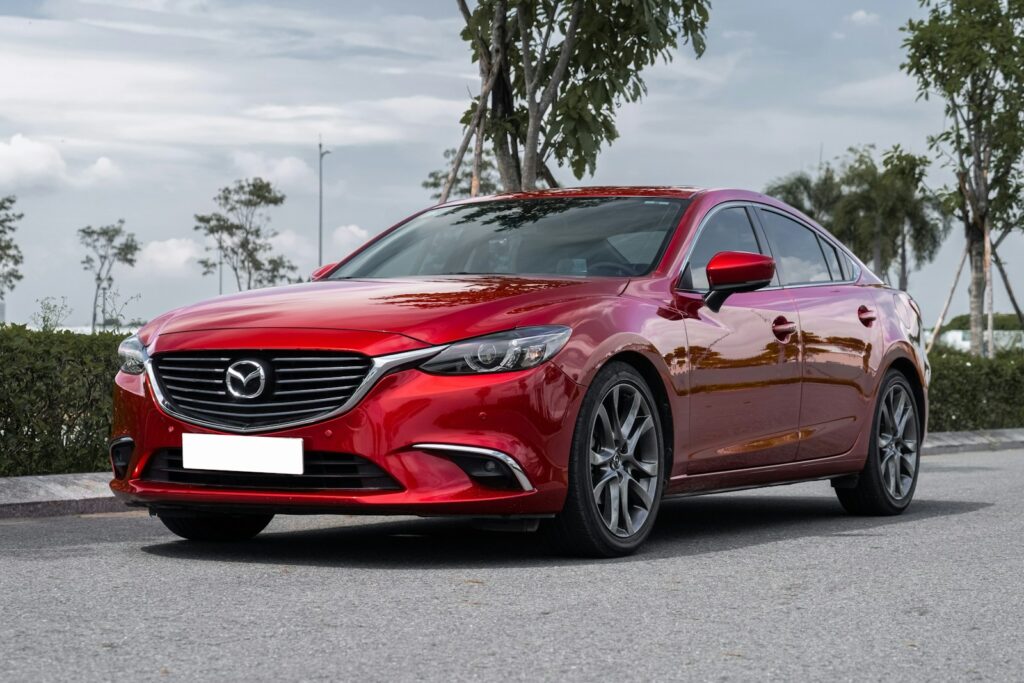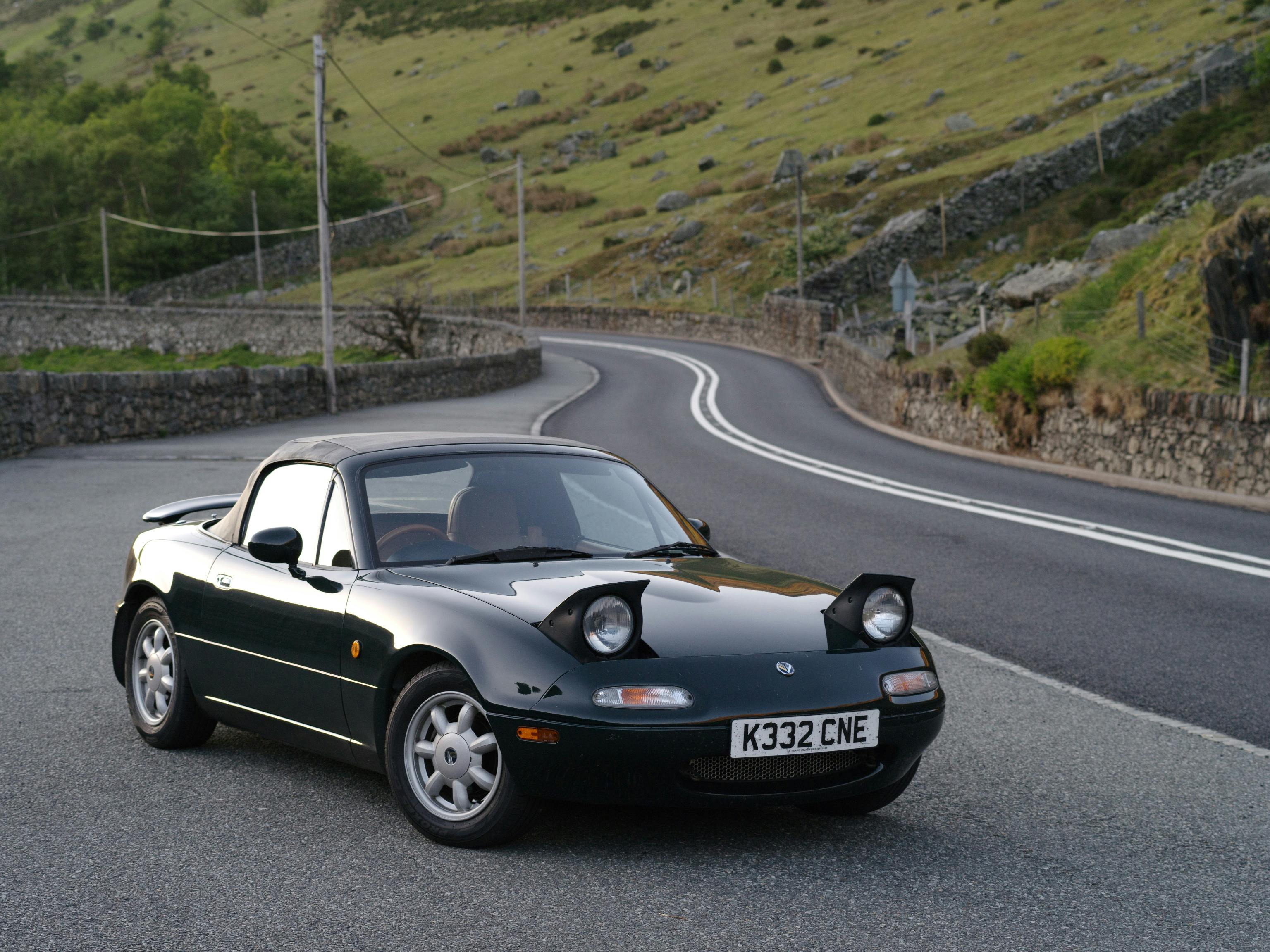
For decades, the Mazda Miata has been synonymous with pure driving pleasure, a testament to the lightweight, nimble sports car philosophy. Yet, among its celebrated lineage, the third-generation MX-5 Miata, affectionately known by its chassis code NC, often finds itself as the quietly competent sibling, a bridge between the analog past and a technologically evolving future. It was a generation that dared to grow, both in physical stature and in the breadth of its offerings, proving that the Miata formula could evolve without losing its soul.
This era marked a pivotal shift for the beloved roadster, addressing a key barrier for many potential enthusiasts: size. Mazda engineered the NC with a noticeable boost in dimensions, making the dream of owning one of the “world’s greatest sports cars” accessible to a broader range of drivers who previously found its predecessors a bit too snug. While no one would confuse it with a grand tourer, this thoughtful expansion, coupled with an array of modern upgrades, positioned the NC as a formidable contender for those seeking an excellent driver’s car with a touch of contemporary refinement or even a competitive entry into spec racing.
Our journey delves deep into the nuances and significant transformations that occurred throughout the NC MX-5 Miata’s impressive nine-year production run. From its comprehensive redesign to the introduction of innovative features and a slew of compelling special editions, we will explore the engineering decisions and market strategies that cemented the NC’s place in automotive history. Prepare to uncover the intricacies that define this often-underestimated chapter in the Miata story, a legacy rich in technical depth and driving dynamics that deserves a closer look.
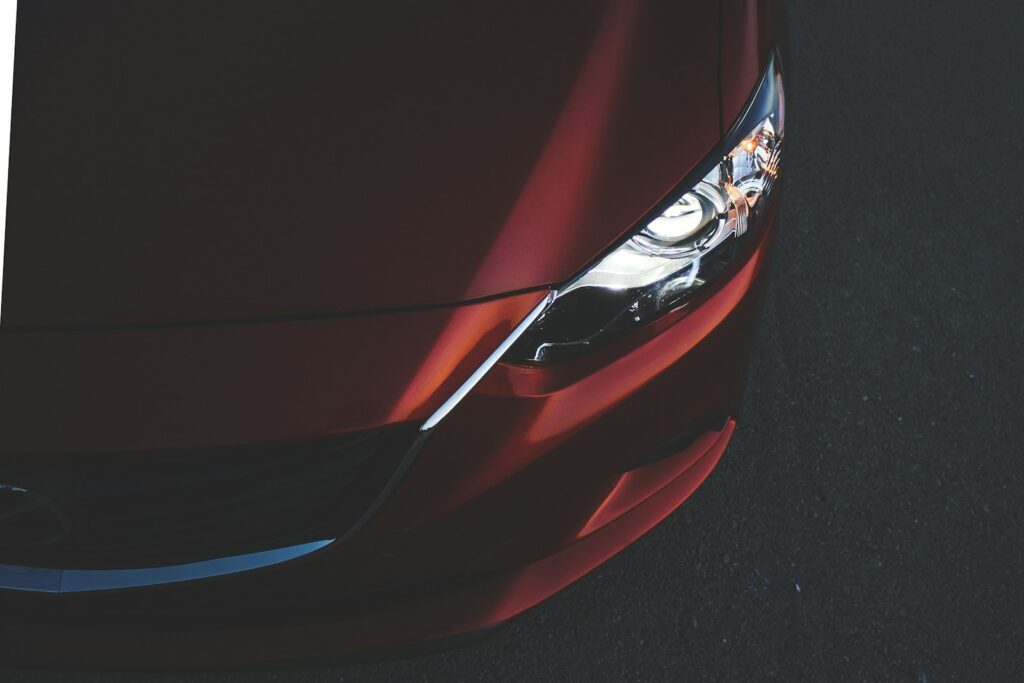
1. **The NC Generation’s Foundational Changes: Size, Name, and Modernity**The third-generation Mazda MX-5 Miata, identified internally as the NC, arrived on the scene with a clear mandate: to evolve the beloved roadster. For the first time in the United States, the car officially carried the “MX-5” designation alongside “Miata,” a nomenclature already familiar in other global markets. More significantly, the NC received a tangible size boost, a strategic move designed to accommodate “bigger drivers” who may have found previous generations too compact. This expansion, while maintaining the Miata’s core principles of light weight and agility, broadened its appeal without compromising its essential character as a sports car.
This generation represented a deliberate step forward in terms of modernity. While earlier Miatas are often revered as the “last hurrah of the analog, traction control-less, drive-by-cable throttle era,” the 2006 NC embraced a suite of contemporary upgrades and amenities. It wasn’t just about physical dimensions; it was about integrating advancements that enhanced both driver comfort and vehicle performance. The NC aimed to offer a more refined, yet equally engaging, driving experience that could appeal to a wider audience, from daily commuters to track-day enthusiasts looking for a “potential CSX spec class entry.”
Produced from 2005 to 2015, with North American model years spanning 2006 to 2015, the NC generation quickly garnered critical acclaim. Its introduction in 2005 earned it the prestigious Car of the Year Japan Award, an early indicator of its engineering prowess and market relevance. Furthermore, it solidified its reputation by making Car and Driver’s highly competitive “10Best” list for an impressive eight consecutive years, from 2006 to 2013. These accolades underscore the NC’s success in blending its traditional driver-focused ethos with the demands of a new automotive landscape.
Car Model Information: 2019 Lexus GX 460 Premium
Name: Mazda MX-5
Manufacturer: Mazda
Aka: unbulleted indent list
Production: 1989–present
Assembly: Hiroshima
Class: Roadster (car),sports car
Layout: unbulleted indent list
Platform: List of Mazda model codes#Model codes
Categories: 1990s cars, 2000s cars, 2010s cars, 2020s cars, All Wikipedia articles in need of updating
Summary: The Mazda MX-5 is a lightweight two-seat sports car manufactured and marketed by Mazda. In Japan, it is marketed as the Mazda Roadster or, previously, as the Eunos Roadster. In the United States it is sold as the Mazda Miata (), and it was formerly marketed under the same name in Canada. The name miata derives from Old High German for “reward”.
Produced at Mazda’s Hiroshima plant, the MX-5 debuted in 1989 at the Chicago Auto Show. It was created under the design credo Jinba ittai, meaning “unity of horse and rider”. Noted for its small, light, balanced and minimalist design, the MX-5 has often been described as a successor to the 1950s and 1960s Italian and British roadsters, with the Lotus Elan serving as a design benchmark.
Each generation is identified by a two-letter code, beginning with the first generation NA. The second generation NB launched in 1998, followed by the third generation NC in 2005, and the fourth generation ND in 2015.
More than one million MX-5s have been sold, making it the best-selling two-seat convertible sports car in history.
Get more information about: Mazda MX-5
Buying a high-performing used car >>>
Brand: Mazda Model: MX-5 Miata
Price: $30,991 Mileage: 72,932 mi.

2. **The 2006 Redesign: A Modern Evolution in Engine, Suspension, Brakes, and Trims**The 2006 model year heralded a complete top-to-bottom redesign for the MX-5 Miata, a transformation that also saw it share design and engineering parallels with Mazda’s then-flagship sports car, the RX-8. This overhaul wasn’t merely cosmetic; it involved fundamental changes to the powertrain, chassis, and safety systems. The objective was clear: to infuse the Miata with a new level of sophistication and capability, shedding some of the purely analog characteristics of its predecessors in favor of a more balanced, modern approach without sacrificing the core tenets of lightweight roadster performance.
At the heart of the 2006 NC was a brand-new powerplant, the 2.0-liter MZR engine, which replaced the long-standing Mazda B engine. This new unit delivered an advertised 170 horsepower and 140 lb.-ft. of torque when paired with a manual transmission, providing a significant uplift in performance. Complementing the enhanced engine, the suspension system also underwent a radical transformation. The front received an all-new double wishbone design, a sophisticated setup for precise handling. Even more notably, the rear adopted a totally reworked multilink configuration, a direct sharing of architecture with the aforementioned Mazda RX-8, emphasizing the NC’s commitment to improved driving dynamics and ride quality.
Safety and control were also brought into the modern era with the standardization of antilock brakes across all NC MX-5s, a critical upgrade for enhanced stopping power and driver confidence. Curiously, an exception was made for Canadian market 2006 base models, which did not receive this feature. Alongside these technical advancements, Mazda restructured the MX-5 Miata’s trim levels to offer greater choice and differentiation. The base model, initially without a special moniker, was sold alongside more equipped Sport, Touring, and Grand Touring options, in addition to a Club spec aimed at enthusiasts.
Delving into the transmission options reveals a thoughtful segmentation designed to cater to varying driver preferences. Base, Touring, and Club spec cars were equipped with a 5-speed manual transmission, offering a classic, direct driving experience. For those seeking closer ratios and enhanced performance, the 6-speed manual transmission became the exclusive domain of the Sport and Grand Touring models. Furthermore, for drivers desiring convenience without sacrificing engagement, a 6-speed paddle-shift automatic transmission was available as an option on Touring, Sport, and Grand Touring trims, showcasing Mazda’s effort to broaden the Miata’s appeal.
Enthusiasts looking to extract maximum performance from their NC had the option of the Suspension Package. This desirable upgrade bestowed the car with a sportier spring setup, high-performance Bilstein shocks, and a limited-slip differential (available exclusively on manual transmission cars), providing tangible improvements in handling and traction. Beyond the mechanical enhancements, Mazda’s Dynamic Stability Control (DSC) system was also offered as an option on higher-spec models, providing an additional layer of electronic safety and control, further solidifying the NC’s position as a modern, capable sports car.
Car Model Information: 2019 Lexus GX 460 Premium
Name: Mazda MX-5
Manufacturer: Mazda
Aka: unbulleted indent list
Production: 1989–present
Assembly: Hiroshima
Class: Roadster (car),sports car
Layout: unbulleted indent list
Platform: List of Mazda model codes#Model codes
Categories: 1990s cars, 2000s cars, 2010s cars, 2020s cars, All Wikipedia articles in need of updating
Summary: The Mazda MX-5 is a lightweight two-seat sports car manufactured and marketed by Mazda. In Japan, it is marketed as the Mazda Roadster or, previously, as the Eunos Roadster. In the United States it is sold as the Mazda Miata (), and it was formerly marketed under the same name in Canada. The name miata derives from Old High German for “reward”.
Produced at Mazda’s Hiroshima plant, the MX-5 debuted in 1989 at the Chicago Auto Show. It was created under the design credo Jinba ittai, meaning “unity of horse and rider”. Noted for its small, light, balanced and minimalist design, the MX-5 has often been described as a successor to the 1950s and 1960s Italian and British roadsters, with the Lotus Elan serving as a design benchmark.
Each generation is identified by a two-letter code, beginning with the first generation NA. The second generation NB launched in 1998, followed by the third generation NC in 2005, and the fourth generation ND in 2015.
More than one million MX-5s have been sold, making it the best-selling two-seat convertible sports car in history.
Get more information about: Mazda MX-5
Buying a high-performing used car >>>
Brand: Mazda Model: MX-5 Miata
Price: $30,991 Mileage: 72,932 mi.
Read more about: Inside Elon Musk’s Global Fleet: 14 Exotic and Unusual Car Selections That Define a Visionary Entrepreneur
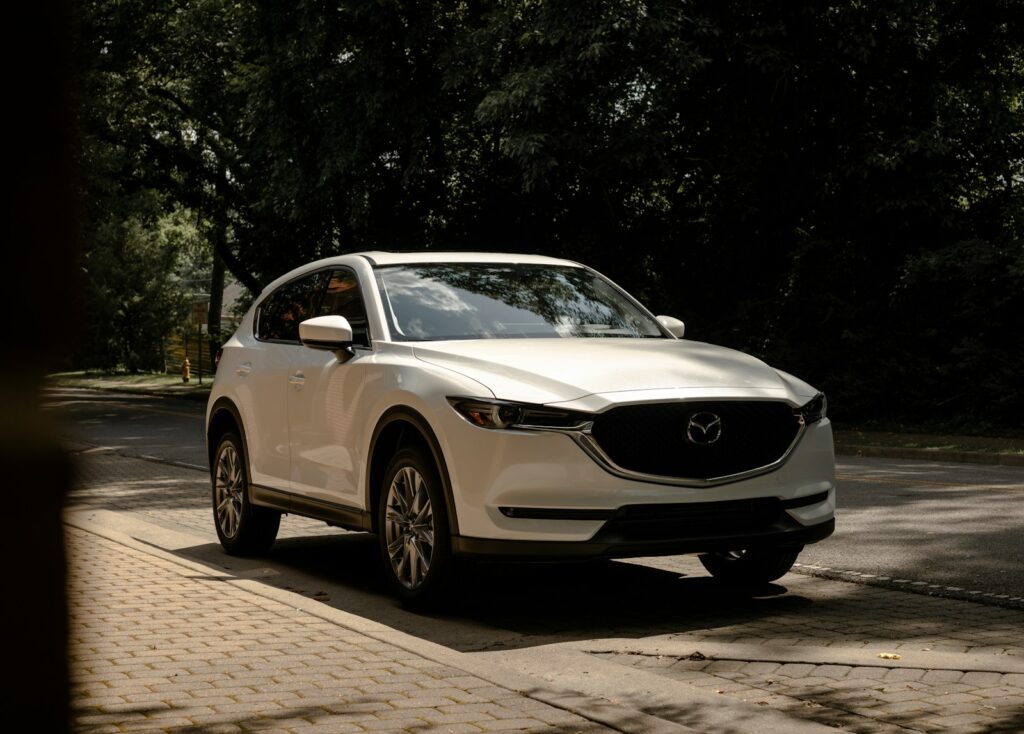
3. **Introducing the Power Retractable Hard Top (PRHT) in 2007**One of the most significant innovations to arrive during the NC generation was the Power Retractable Hard Top (PRHT), a feature that dramatically expanded the Miata’s versatility and appeal. Debuted by Mazda in July 2006, this marked a monumental first for the MX-5 lineage. While previous generations could be fitted with aftermarket hardtops, the NC was the pioneering, and indeed the only, generation to offer an option that allowed the solid roof to fold and deploy entirely on its own, seamlessly transforming the roadster into a coupé at the touch of a button.
The engineering behind the PRHT was remarkably clever. Designed by Webasto and constructed of lightweight polycarbonate, the two-piece folding hardtop could be raised or lowered in a swift 12 seconds, a testament to its efficient mechanism. Critically, this innovative design ensured that the hardtop, when retracted, did not infringe upon the car’s already compact trunk space, a common drawback in many retractable hardtop designs. This preservation of practicality was a major selling point, distinguishing the NC PRHT from competitors and offering a genuine dual-purpose solution for Miata enthusiasts.
Of course, adding a solid, folding roof mechanism invariably introduced a weight penalty. The PRHT added a modest 78 pounds (36 kg) to the weight of a comparably equipped soft-top model. This increase had a slight, measurable impact on straight-line performance, with the 0-100 km/h (62 mph) acceleration time increasing slightly. However, the hardtop’s improved aerodynamics compensated for this in other areas; top speed actually increased from 196 km/h (121.8 mph) to 200 km/h (124.3 mph) for the 1.8L European model and from 210 km/h (130 mph) to 215 km/h (134 mph) for the 2.0L. To manage this additional mass and maintain the Miata’s renowned handling, the PRHT models received a slightly modified suspension with stiffer springs.
The PRHT cars quickly established themselves as an “excellent option for those who want a reliable top-down cruiser with the practical advantages of a hardtop.” It offered a quieter cabin, enhanced security, and the year-round usability of a coupé, all while retaining the exhilarating open-air experience of a convertible. A minor compromise was the omission of one of the soft-top’s two storage compartments behind the seats to accommodate the folding roof mechanism, and a switch to a steel trunk lid from the soft-top’s aluminum, but these were small prices to pay for such a significant increase in versatility.
Car Model Information: 2023 Mazda MX-5 Miata Club
Name: Mazda MX-5
Manufacturer: Mazda
Aka: unbulleted indent list
Production: 1989–present
Assembly: Hiroshima
Class: Roadster (car),sports car
Layout: unbulleted indent list
Platform: List of Mazda model codes#Model codes
Categories: 1990s cars, 2000s cars, 2010s cars, 2020s cars, All Wikipedia articles in need of updating
Summary: The Mazda MX-5 is a lightweight two-seat sports car manufactured and marketed by Mazda. In Japan, it is marketed as the Mazda Roadster or, previously, as the Eunos Roadster. In the United States it is sold as the Mazda Miata (), and it was formerly marketed under the same name in Canada. The name miata derives from Old High German for “reward”.
Produced at Mazda’s Hiroshima plant, the MX-5 debuted in 1989 at the Chicago Auto Show. It was created under the design credo Jinba ittai, meaning “unity of horse and rider”. Noted for its small, light, balanced and minimalist design, the MX-5 has often been described as a successor to the 1950s and 1960s Italian and British roadsters, with the Lotus Elan serving as a design benchmark.
Each generation is identified by a two-letter code, beginning with the first generation NA. The second generation NB launched in 1998, followed by the third generation NC in 2005, and the fourth generation ND in 2015.
More than one million MX-5s have been sold, making it the best-selling two-seat convertible sports car in history.
Get more information about: Mazda MX-5
Buying a high-performing used car >>>
Brand: Mazda Model: MX-5
Price: $25,996 Mileage: 32,837 mi.
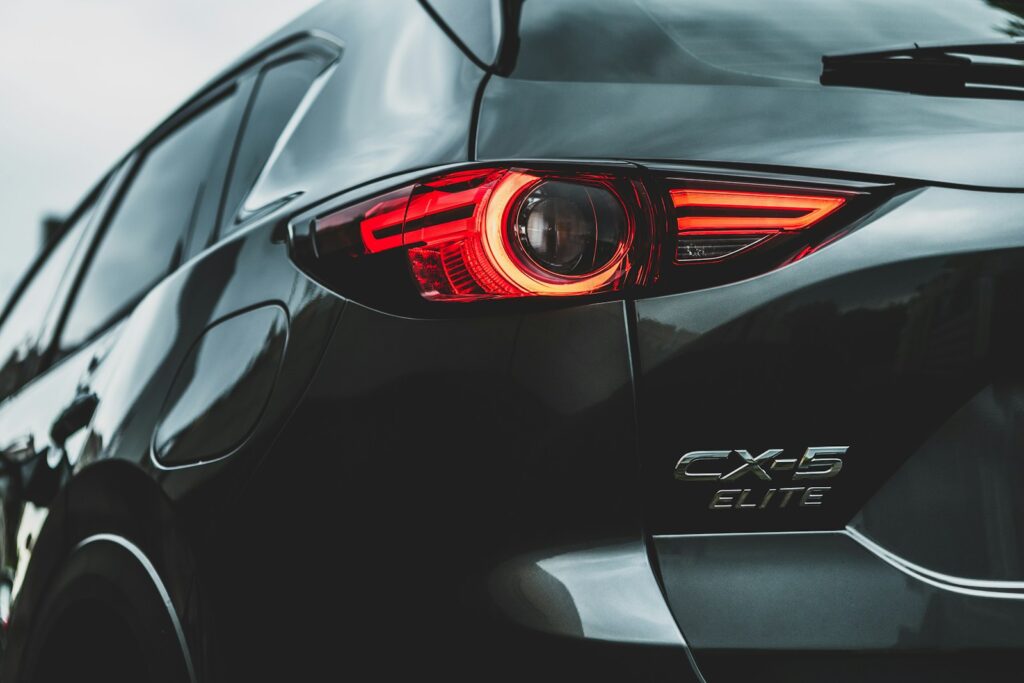
4. **The 2007 Updates and Package Enhancements**Following the significant overhaul of 2006 and the introduction of the groundbreaking Power Retractable Hard Top, the 2007 model year brought a more subtle, yet still important, series of refinements and package adjustments to the NC MX-5 Miata. While not as dramatic as the preceding year’s changes, these updates demonstrated Mazda’s continuous commitment to fine-tuning the Miata experience based on market feedback and engineering opportunities. One of the most straightforward changes was the base model officially adopting the “SV” name, providing a clearer identity within the trim hierarchy.
Beyond nomenclature, a notable enhancement for 2007 revolved around the availability of the limited-slip differential (LSD). Previously, an LSD was primarily associated with the optional Suspension Package on manual transmission cars. For 2007, Mazda broadened its accessibility, making the LSD also part of the Premium Package on manual-equipped cars. This meant that enthusiasts could now obtain this crucial performance-enhancing component without necessarily opting for the full Suspension Package, offering greater flexibility in vehicle configuration and potentially a more attractive price point for certain buyers.
Another significant adjustment for the 2007 model year concerned the transmission offerings for the Sport trim. Mazda reconfigured the lineup, relegating Sport model cars exclusively to the 5-speed manual transmission. This move effectively consolidated the more performance-oriented 6-speed manual transmission option, making it available only in the Touring and Grand Touring trims. Such strategic adjustments in package content and trim level features allowed Mazda to refine its market positioning, ensuring that specific transmission options were aligned with the intended character and equipment levels of each respective Miata variant, though it meant Sport buyers had one less option for their gearboxes.
Car Model Information: 2019 Lexus GX 460 Premium
Name: Mazda MX-5
Manufacturer: Mazda
Aka: unbulleted indent list
Production: 1989–present
Assembly: Hiroshima
Class: Roadster (car),sports car
Layout: unbulleted indent list
Platform: List of Mazda model codes#Model codes
Categories: 1990s cars, 2000s cars, 2010s cars, 2020s cars, All Wikipedia articles in need of updating
Summary: The Mazda MX-5 is a lightweight two-seat sports car manufactured and marketed by Mazda. In Japan, it is marketed as the Mazda Roadster or, previously, as the Eunos Roadster. In the United States it is sold as the Mazda Miata (), and it was formerly marketed under the same name in Canada. The name miata derives from Old High German for “reward”.
Produced at Mazda’s Hiroshima plant, the MX-5 debuted in 1989 at the Chicago Auto Show. It was created under the design credo Jinba ittai, meaning “unity of horse and rider”. Noted for its small, light, balanced and minimalist design, the MX-5 has often been described as a successor to the 1950s and 1960s Italian and British roadsters, with the Lotus Elan serving as a design benchmark.
Each generation is identified by a two-letter code, beginning with the first generation NA. The second generation NB launched in 1998, followed by the third generation NC in 2005, and the fourth generation ND in 2015.
More than one million MX-5s have been sold, making it the best-selling two-seat convertible sports car in history.
Get more information about: Mazda MX-5
Buying a high-performing used car >>>
Brand: Mazda Model: MX-5 Miata
Price: $30,991 Mileage: 72,932 mi.
Read more about: Buyer Warning: These 7 Popular Vehicles Can Become Service Bay Staples Once They Hit 80,000 Miles
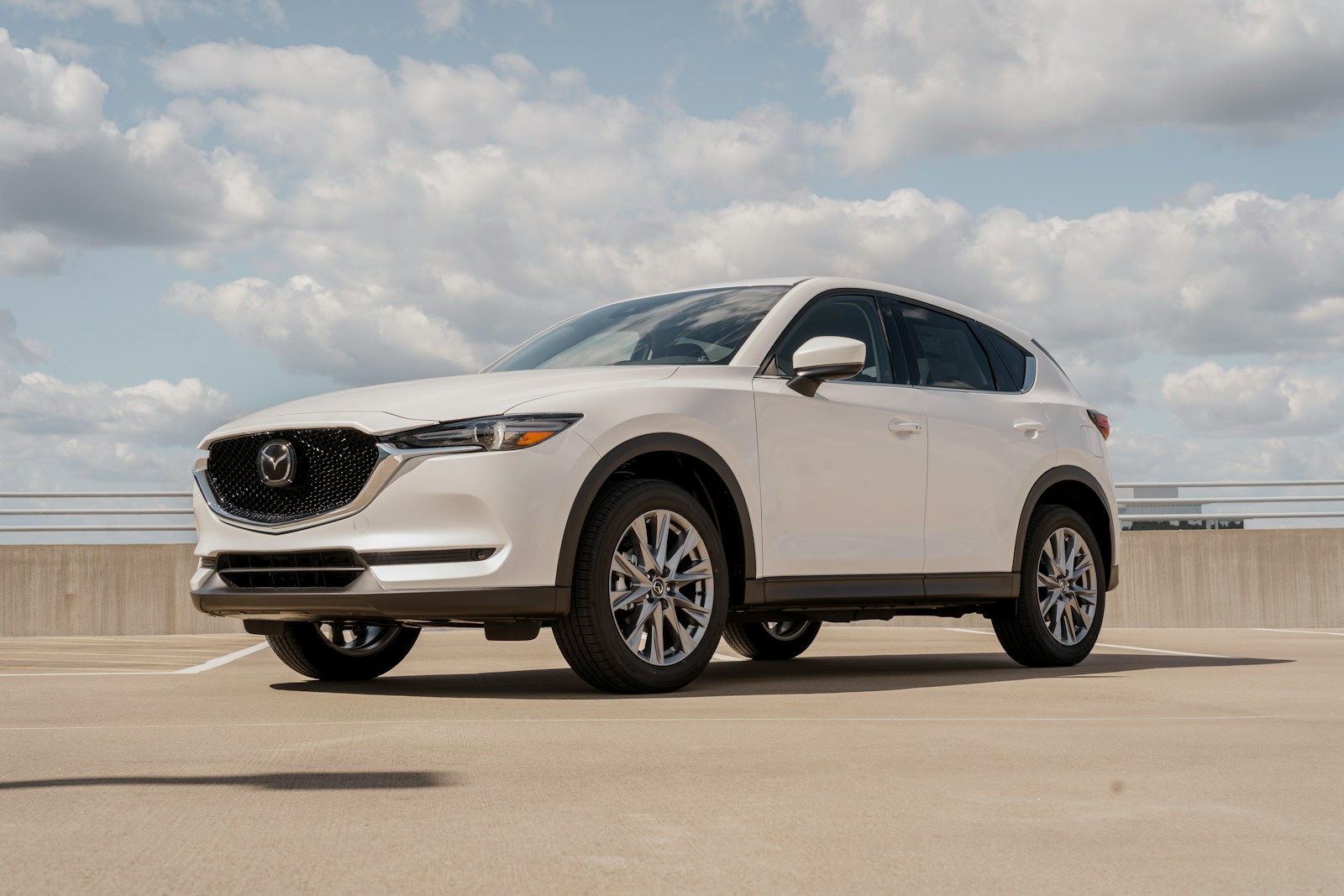
5. **The NC2 Facelift (2009): Engine Refinements and Styling Evolution**A few years into the NC MX-5’s lifecycle, Mazda introduced its first significant facelift for the 2009 model year, a refresh widely recognized by enthusiasts as the “NC2.” This mid-cycle update brought a blend of exterior styling enhancements and crucial under-the-hood improvements designed to make the Miata even more robust and engaging. Visually, the most striking change was a restyled front fascia, which incorporated stylistic elements from Mazda’s newer corporate design language. This included a larger grille and redesigned head and fog lights, giving the NC2 a more assertive and contemporary appearance compared to the earlier NC1 models.
Beyond the front, the facelift extended to other areas, with restyled side skirts, a revised rear bumper, and updated tail lights contributing to a cohesive and modernized aesthetic. For the soft-top Touring and Grand Touring models, a distinctive mesh grille bordered by a chrome frame was featured. The Power Retractable Hard Top (PRHT) Roadster Coupe further distinguished itself with a similar mesh grille and chrome frame, enhanced by chrome elements within the headlamps and outer door handles, adding a touch of premium sophistication to its refreshed look. The overall effect was a more dynamic and visually current Miata, which, as the public domain image suggests, certainly looked “pretty happy about the update.”
Underneath the restyled bodywork, Mazda engineers focused on enhancing the MZR engine’s robustness. Although the NC2 models were nominally rated at 167 horsepower, a three-horsepower reduction from earlier figures, this was purely an artifact of “changing measurement standards”; in reality, the engines were just as powerful as their predecessors. More importantly, the MZR engine received a series of internal upgrades designed to bolster its durability and performance. These included “forged crankshafts, forged rods with floating wrist pins, new pistons with stronger pin bosses, stiffened valve springs, and an engine oil cooler.” These enhancements signified a commitment to long-term reliability and track-day resilience.
Driving enthusiasts also benefited from significant improvements to the manual transmission. Mazda engineers increased the redline for manual transmission cars to a “screaming 7,200 rpm,” providing a wider powerband and a more exhilarating top-end experience. Coupled with this, the transmissions received “new coatings on the synchros to improve shift quality,” resulting in smoother, more precise gear changes. Further refinements included unspecified “suspension updates” to fine-tune the handling characteristics. Inside the cabin, a subtle but practical change was the removal of a protrusion in the door pocket, creating some welcome “added space” for occupants.
The interior of the NC2 also saw a refinement of its aesthetics and ergonomics. The instrument panel was updated with darker features and redesigned graphics for the gauges, improving readability and giving the cockpit a more modern feel. The fuel cut-off for manual transmission models was also raised to 7,500 rpm, further emphasizing the engine’s newfound rev-happy nature. These comprehensive updates, both visible and hidden, ensured the NC2 remained competitive and compelling, demonstrating Mazda’s dedication to continuous improvement throughout the Miata’s lifespan.
Car Model Information: 2023 Mazda MX-5 Miata Club
Name: Mazda MX-5
Manufacturer: Mazda
Aka: unbulleted indent list
Production: 1989–present
Assembly: Hiroshima
Class: Roadster (car),sports car
Layout: unbulleted indent list
Platform: List of Mazda model codes#Model codes
Categories: 1990s cars, 2000s cars, 2010s cars, 2020s cars, All Wikipedia articles in need of updating
Summary: The Mazda MX-5 is a lightweight two-seat sports car manufactured and marketed by Mazda. In Japan, it is marketed as the Mazda Roadster or, previously, as the Eunos Roadster. In the United States it is sold as the Mazda Miata (), and it was formerly marketed under the same name in Canada. The name miata derives from Old High German for “reward”.
Produced at Mazda’s Hiroshima plant, the MX-5 debuted in 1989 at the Chicago Auto Show. It was created under the design credo Jinba ittai, meaning “unity of horse and rider”. Noted for its small, light, balanced and minimalist design, the MX-5 has often been described as a successor to the 1950s and 1960s Italian and British roadsters, with the Lotus Elan serving as a design benchmark.
Each generation is identified by a two-letter code, beginning with the first generation NA. The second generation NB launched in 1998, followed by the third generation NC in 2005, and the fourth generation ND in 2015.
More than one million MX-5s have been sold, making it the best-selling two-seat convertible sports car in history.
Get more information about: Mazda MX-5
Buying a high-performing used car >>>
Brand: Mazda Model: MX-5
Price: $25,996 Mileage: 32,837 mi.
6. **The NC3 Sub-Generation (2013): Driving Dynamics and Standard Features**Never truly content to rest on their laurels, Mazda engineers returned to the drawing board to implement further adjustments for what enthusiasts identify as the “NC3” sub-generation, introduced for the 2013 model year. While this update was “less of an overhaul than the NC2,” it nonetheless brought another minor facelift alongside a series of crucial tweaks aimed at refining the Miata’s driving dynamics and standardizing key safety features. The exterior received subtle revisions, including a front bumper with a bigger grille opening, a revised fog lamp design, and a new lip spoiler, contributing to a slightly more aggressive and cohesive appearance.
Under the skin, the focus was squarely on enhancing the driver-car connection. Manual-equipped cars benefited from “ECU tweaks” that provided a “more linear accelerator pedal response,” translating to a more predictable and satisfying power delivery precisely when the driver demanded it. Complementing this, the brake booster also received “some minor adjustment,” which was modified “to better modulate braking performance on the roadster.” These subtle but impactful changes underscore Mazda’s dedication to the “Jinba Ittai” (horse and rider as one) philosophy, ensuring that the Miata remained exceptionally intuitive and rewarding to drive.
A significant stride in safety and accessibility for the 2013 model year was the “standardization of Dynamic Stability Control” (DSC) across the entire NC Miata lineup. This move ensured that all buyers, regardless of trim level, benefited from this advanced electronic stability aid, enhancing vehicle control in challenging driving conditions. Simultaneously, Mazda streamlined the trim levels, reducing them to Sport, Club, and Grand Touring, simplifying the buying process while focusing on popular configurations.
The transmission offerings were also refined within this new trim structure. The enduring 5-speed manual transmission continued to be available in the Sport trim, catering to those who appreciated its simplicity and direct engagement. For drivers seeking the added performance and closer ratios of the 6-speed manual, it was exclusively paired with the Club and Grand Touring models. For those who preferred an automatic, a 6-speed electronically controlled automatic transmission remained an option across all trim levels, offering flexibility without compromising on the Miata’s character.
The 2013 Club model, in particular, received a substantial upgrade, making it an especially compelling choice for enthusiasts. For the first time, it incorporated the “Appearance and Suspension packages as standard,” though the Suspension pack was still limited to manual transmission cars. This meant Club models now came with a host of performance and aesthetic enhancements, including black headlamps, black side mirror covers, 17×7-inch gun metal black alloy wheels, Bilstein dampers, and a limited-slip differential. The interior also received special treatment with body color dash trim, red stitched black cloth seats, MX-5 decals, and more pronounced front and rear aerodynamic splitters, all contributing to a more purposeful and track-ready aesthetic. Buyers had specific color choices limited to True Red, Brilliant Black, Crystal White Pearl, and Liquid Silver Metallic, with options of either a black cloth top or a black PRHT, further defining the focused nature of this enthusiast-oriented trim.
Having explored the foundational changes and significant facelifts of the NC generation, our journey now turns to the bespoke and performance-enhanced variants that truly showcased the Miata’s versatility and its enduring appeal to enthusiasts. These special editions and concepts pushed the boundaries of what the NC could be, offering unique styling, elevated luxury, or exhilarating performance that celebrated its essence. They represent Mazda’s willingness, and that of its partners, to experiment and innovate, ensuring the NC remained a vibrant and relevant sports car throughout its production run.
Car Model Information: 2023 Mazda MX-5 Miata Club
Name: Mazda MX-5
Manufacturer: Mazda
Aka: unbulleted indent list
Production: 1989–present
Assembly: Hiroshima
Class: Roadster (car),sports car
Layout: unbulleted indent list
Platform: List of Mazda model codes#Model codes
Categories: 1990s cars, 2000s cars, 2010s cars, 2020s cars, All Wikipedia articles in need of updating
Summary: The Mazda MX-5 is a lightweight two-seat sports car manufactured and marketed by Mazda. In Japan, it is marketed as the Mazda Roadster or, previously, as the Eunos Roadster. In the United States it is sold as the Mazda Miata (), and it was formerly marketed under the same name in Canada. The name miata derives from Old High German for “reward”.
Produced at Mazda’s Hiroshima plant, the MX-5 debuted in 1989 at the Chicago Auto Show. It was created under the design credo Jinba ittai, meaning “unity of horse and rider”. Noted for its small, light, balanced and minimalist design, the MX-5 has often been described as a successor to the 1950s and 1960s Italian and British roadsters, with the Lotus Elan serving as a design benchmark.
Each generation is identified by a two-letter code, beginning with the first generation NA. The second generation NB launched in 1998, followed by the third generation NC in 2005, and the fourth generation ND in 2015.
More than one million MX-5s have been sold, making it the best-selling two-seat convertible sports car in history.
Get more information about: Mazda MX-5
Buying a high-performing used car >>>
Brand: Mazda Model: Miata
Price: $25,996 Mileage: 32,837 mi.

7. **MX-5 Superlight version (2009)**Commemorating the 20th anniversary of MX-5 production, the MX-5 Superlight version emerged in 2009 as a radical concept, designed at Mazda’s studio in Frankfurt, Germany. This isn’t just a car; it’s a profound statement on the core Miata philosophy: light weight equals performance. What truly set it apart was its daring omission of a windshield, a bold design choice that immediately signaled its dedication to an unfiltered, visceral driving experience, placing the driver directly in tune with the road and elements.
Crafted from lightweight materials throughout, the Superlight concept aimed to enhance every aspect of performance, from handling and acceleration to fuel economy and CO2 emissions. Under the hood, it featured a MZR 1.8-liter petrol engine, delivering 93 kW (125 hp) at 6,500 rpm and 167 N⋅m (123 lb⋅ft) of torque at 4,500 rpm. This powerplant was paired with a 5-speed manual transmission, ensuring direct driver engagement. The suspension was equally purposeful, featuring a double wishbone front and multi-link rear setup, complemented by Bilstein monotube dampers, 205/45R17 tires, and robust 300 mm (11.8 in) ventilated front and 280 mm (11.0 in) solid rear brake discs for uncompromising stopping power.
The dedication to shedding weight was paramount, resulting in a curb weight of just 1,000 kg (2,200 lb). While this made it 59 kg (130 lb) heavier than the original NA 1.8 series MX-5, the Superlight nonetheless represented an extreme interpretation of the Miata’s lightweight ethos for a modern era. This concept served as a powerful reminder of the MX-5’s fundamental principles, demonstrating how far the NC platform could be pushed in pursuit of pure, unadulterated driving exhilaration, proving that less truly can be more.
Car Model Information: 2023 Mazda MX-5 Miata Club
Name: Mazda MX-5
Manufacturer: Mazda
Aka: unbulleted indent list
Production: 1989–present
Assembly: Hiroshima
Class: Roadster (car),sports car
Layout: unbulleted indent list
Platform: List of Mazda model codes#Model codes
Categories: 1990s cars, 2000s cars, 2010s cars, 2020s cars, All Wikipedia articles in need of updating
Summary: The Mazda MX-5 is a lightweight two-seat sports car manufactured and marketed by Mazda. In Japan, it is marketed as the Mazda Roadster or, previously, as the Eunos Roadster. In the United States it is sold as the Mazda Miata (), and it was formerly marketed under the same name in Canada. The name miata derives from Old High German for “reward”.
Produced at Mazda’s Hiroshima plant, the MX-5 debuted in 1989 at the Chicago Auto Show. It was created under the design credo Jinba ittai, meaning “unity of horse and rider”. Noted for its small, light, balanced and minimalist design, the MX-5 has often been described as a successor to the 1950s and 1960s Italian and British roadsters, with the Lotus Elan serving as a design benchmark.
Each generation is identified by a two-letter code, beginning with the first generation NA. The second generation NB launched in 1998, followed by the third generation NC in 2005, and the fourth generation ND in 2015.
More than one million MX-5s have been sold, making it the best-selling two-seat convertible sports car in history.
Get more information about: Mazda MX-5
Buying a high-performing used car >>>
Brand: Mazda Model: MX-5
Price: $25,996 Mileage: 32,837 mi.
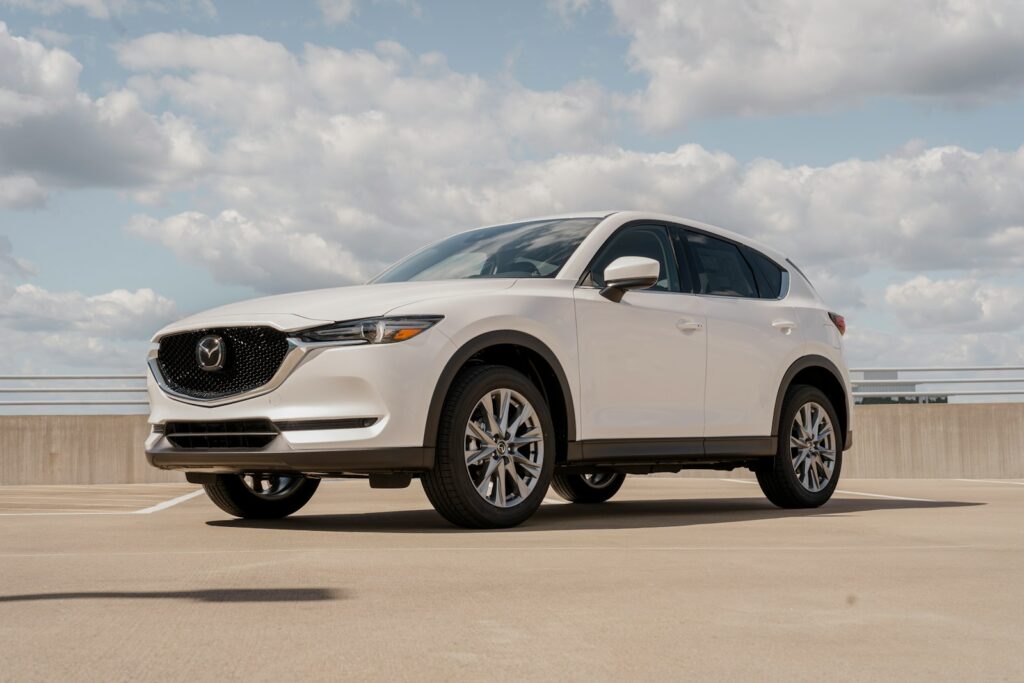
8. **2010 SEMA concept (MX-5 Super20)**Fast forward to the 2010 SEMA Show, where Mazda unveiled the MX-5 Super20, a concept that unequivocally demonstrated the NC Miata’s formidable potential as a performance machine ready for the track. This concept was a direct nod to the aftermarket community and the vast tuning capabilities inherent in the Miata platform. It was designed to highlight not just what could be done with the NC, but how effectively its already excellent chassis could be enhanced for competitive driving and serious enthusiast enjoyment.
At its core, the Super20 concept boasted a DPTune-reflashed ECU married to a supercharged Cosworth motor, a combination engineered for significantly increased power output and sharper throttle response. To manage this enhanced power, an ACT clutch was integrated, ensuring reliable power transfer. The handling, already a Miata strong suit, was further honed with MAZDASPEED coilover shocks and a shock tower brace, providing superior damping and chassis rigidity. Racing Beat hollow anti-roll bars were also fitted, meticulously tuning the car’s roll stiffness for flatter cornering and improved agility, crucial for spirited driving or autocross competition.
Further solidifying its performance credentials, the MX-5 Super20 was equipped with a comprehensive braking system featuring StopTech brakes and SpeedSource brake disks, guaranteeing exceptional stopping power and fade resistance under demanding conditions. The car rode on 16-inch Enkei wheels, a popular choice among enthusiasts for their light weight and strength, further reducing unsprung mass. Collectively, these modifications showcased the NC’s inherent strength as a foundation for high-performance builds, proving it capable of far more than its factory specification suggested and inspiring countless tuners and drivers to explore its full potential.
Car Model Information: 2023 Mazda MX-5 Miata Club
Name: Mazda MX-5
Manufacturer: Mazda
Aka: unbulleted indent list
Production: 1989–present
Assembly: Hiroshima
Class: Roadster (car),sports car
Layout: unbulleted indent list
Platform: List of Mazda model codes#Model codes
Categories: 1990s cars, 2000s cars, 2010s cars, 2020s cars, All Wikipedia articles in need of updating
Summary: The Mazda MX-5 is a lightweight two-seat sports car manufactured and marketed by Mazda. In Japan, it is marketed as the Mazda Roadster or, previously, as the Eunos Roadster. In the United States it is sold as the Mazda Miata (), and it was formerly marketed under the same name in Canada. The name miata derives from Old High German for “reward”.
Produced at Mazda’s Hiroshima plant, the MX-5 debuted in 1989 at the Chicago Auto Show. It was created under the design credo Jinba ittai, meaning “unity of horse and rider”. Noted for its small, light, balanced and minimalist design, the MX-5 has often been described as a successor to the 1950s and 1960s Italian and British roadsters, with the Lotus Elan serving as a design benchmark.
Each generation is identified by a two-letter code, beginning with the first generation NA. The second generation NB launched in 1998, followed by the third generation NC in 2005, and the fourth generation ND in 2015.
More than one million MX-5s have been sold, making it the best-selling two-seat convertible sports car in history.
Get more information about: Mazda MX-5
Buying a high-performing used car >>>
Brand: Mazda Model: MX-5
Price: $25,996 Mileage: 32,837 mi.
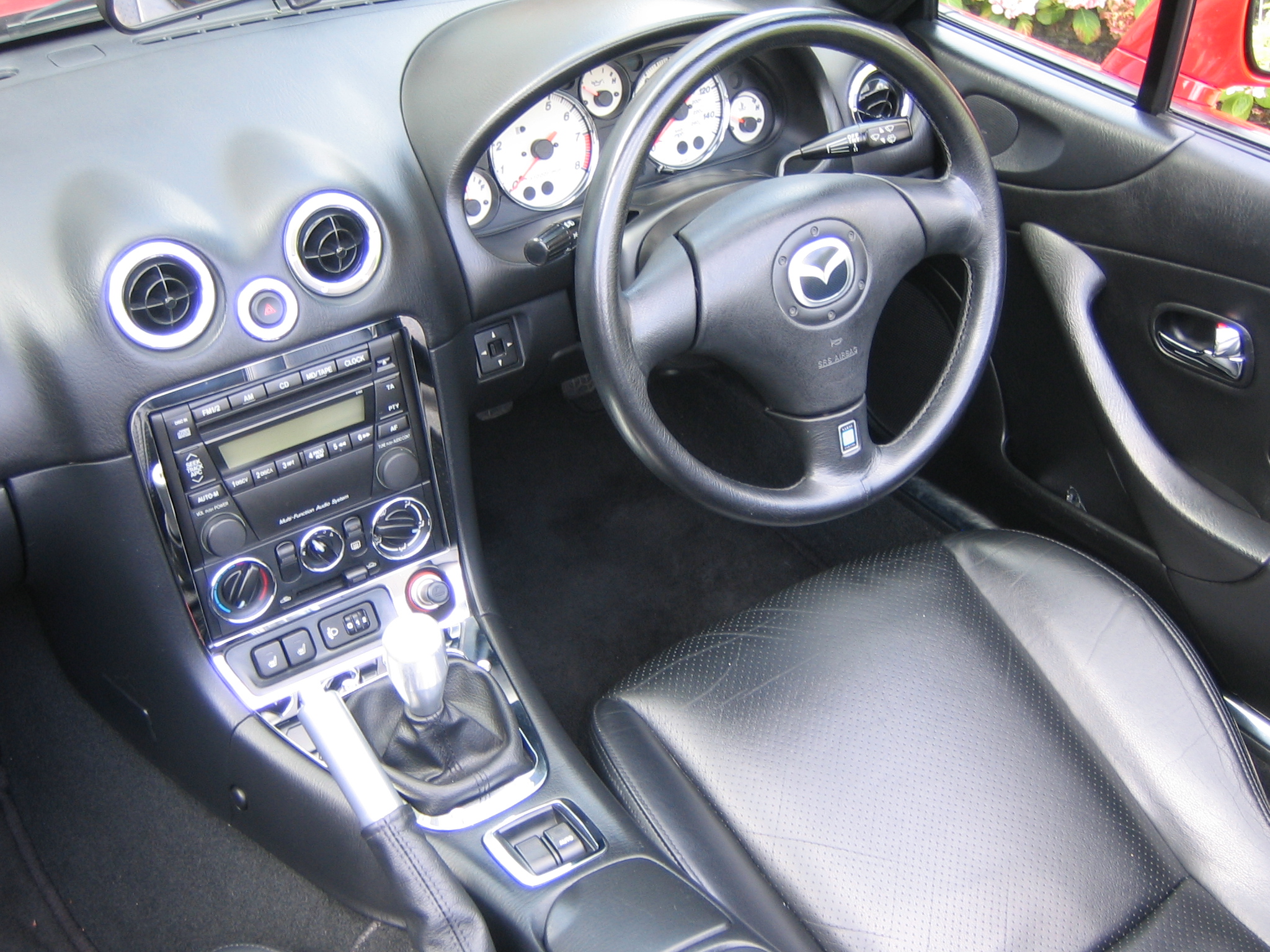
9. **MX-5 Sport Black (2011)**In 2011, the UK market received an exciting addition to the NC lineup with the limited-edition MX-5 Sport Black. This particular model was more than just an aesthetic package; it was a production variant drawing direct inspiration from the Mazda MX-5 GT race car, aiming to infuse that competitive spirit into a street-legal roadster. Offered exclusively as a Power Retractable Hard Top (PRHT) model, the Sport Black combined the practical advantages of a hardtop with a distinct, performance-oriented aesthetic that set it apart from its siblings.
The Sport Black was powered by the robust 120 kW (160 PS) MZR 2.0-liter engine, coupled with the Sport Tech equipment package to ensure a comprehensive enthusiast experience. Visually, it stood out with its Brilliant Black powered retractable hardtop, which perfectly contrasted with its available body colors: Spirited Green metallic, Crystal White Pearlescent, and Velocity Red mica. Dark ‘gun metal’ 17-inch alloy wheels further accentuated its aggressive stance, while unique ‘Black Limited Edition’ exterior badging subtly announced its exclusivity.
Inside, the cabin was meticulously appointed with black leather seats featuring contrasting ‘sand’ colored stitching, creating a sophisticated yet sporty ambiance. A Piano Black steering wheel and deco panel added a touch of premium refinement, while a uniquely numbered interior plaque and Limited Edition floor mats underscored its special status. Crucially for driving enthusiasts, this edition also included a limited-slip differential (LSD), enhancing traction and driving dynamics, particularly during enthusiastic cornering. With only 500 examples produced, the MX-5 Sport Black offered a compelling blend of race-inspired styling, enhanced performance, and exclusive features, making it a highly desirable variant for collectors and drivers alike.
Car Model Information: 2023 Mazda MX-5 Miata Club
Name: Mazda MX-5
Manufacturer: Mazda
Aka: unbulleted indent list
Production: 1989–present
Assembly: Hiroshima
Class: Roadster (car),sports car
Layout: unbulleted indent list
Platform: List of Mazda model codes#Model codes
Categories: 1990s cars, 2000s cars, 2010s cars, 2020s cars, All Wikipedia articles in need of updating
Summary: The Mazda MX-5 is a lightweight two-seat sports car manufactured and marketed by Mazda. In Japan, it is marketed as the Mazda Roadster or, previously, as the Eunos Roadster. In the United States it is sold as the Mazda Miata (), and it was formerly marketed under the same name in Canada. The name miata derives from Old High German for “reward”.
Produced at Mazda’s Hiroshima plant, the MX-5 debuted in 1989 at the Chicago Auto Show. It was created under the design credo Jinba ittai, meaning “unity of horse and rider”. Noted for its small, light, balanced and minimalist design, the MX-5 has often been described as a successor to the 1950s and 1960s Italian and British roadsters, with the Lotus Elan serving as a design benchmark.
Each generation is identified by a two-letter code, beginning with the first generation NA. The second generation NB launched in 1998, followed by the third generation NC in 2005, and the fourth generation ND in 2015.
More than one million MX-5s have been sold, making it the best-selling two-seat convertible sports car in history.
Get more information about: Mazda MX-5
Buying a high-performing used car >>>
Brand: Mazda Model: MX-5
Price: $25,996 Mileage: 32,837 mi.
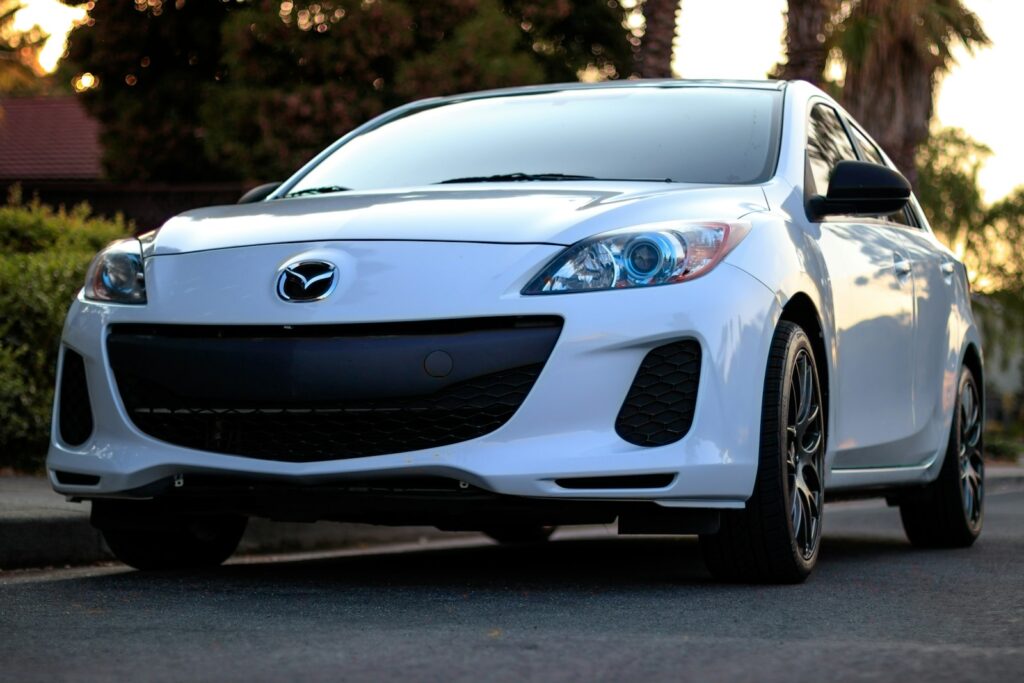
10. **MX-5 “Yusho” (2012)**The 2012 Leipzig Motor Show saw the debut of the MX-5 “Yusho,” a limited-production variant whose very name, meaning “victory” in Japanese, articulated its high-performance aspirations. This model was a serious contender, designed for discerning enthusiasts who demanded significantly more power and track capability from their Miata. It wasn’t merely an appearance package but a comprehensive engineering effort to transform the NC into a formidable performance machine, demonstrating the platform’s untapped potential for forced induction.
At the heart of the Yusho was a supercharged 2.0-liter MZR petrol engine, which benefited from a supercharger kit supplied by Flyin’ Miata, a renowned name in MX-5 tuning. Further enhancing its robustness and power delivery, the engine was fitted with Cosworth pistons and connecting rods. This potent combination resulted in an impressive output of 241 PS (177 kW; 238 hp) and 274 N⋅m (202 lb⋅ft) of torque at 5,450 rpm. Such a significant power boost propelled the Yusho to a top speed of 240 km/h (149 mph), firmly placing it in a higher echelon of sports car performance. The exhaust note was equally distinctive, produced by an individually designed muffler featuring large cross sections and centrally positioned double tailpipes, visually and audibly signaling its enhanced capabilities.
Beyond the engine, the Yusho’s drivetrain and chassis were meticulously upgraded to handle the increased power. A 6-speed manual transmission was paired with a special sports clutch and a shorter final drive ratio of 4.1, optimizing acceleration and driver engagement. The suspension received a comprehensive overhaul, featuring Bilstein shock absorbers, larger stabilizer bars, and lowering springs from Eibach Federn, ensuring exceptional handling and a lowered, more aggressive stance. These components worked in harmony to provide a precise, responsive, and confidence-inspiring driving experience, whether on the road or the track.
The Yusho’s aesthetic details further emphasized its performance focus. It rode on 8Jx17 anthracite gray alloy wheels, shod with Toyo semi-slick tires for maximum grip. The exterior was finished with a distinctive matte-white film wrapping, complemented by a white-foiled rear spoiler and a rear diffuser in carbon fiber-optics. Inside, the cabin featured a suede-trimmed steering wheel and Recaro sport seats, upholstered in a combination of leather and Alcantara, reinforcing its driver-centric and high-performance character. The MX-5 “Yusho” truly embodied the spirit of victory, delivering a factory-backed, supercharged Miata experience that pushed the NC’s capabilities to new heights.
Car Model Information: 2023 Mazda MX-5 Miata Club
Name: Mazda MX-5
Manufacturer: Mazda
Aka: unbulleted indent list
Production: 1989–present
Assembly: Hiroshima
Class: Roadster (car),sports car
Layout: unbulleted indent list
Platform: List of Mazda model codes#Model codes
Categories: 1990s cars, 2000s cars, 2010s cars, 2020s cars, All Wikipedia articles in need of updating
Summary: The Mazda MX-5 is a lightweight two-seat sports car manufactured and marketed by Mazda. In Japan, it is marketed as the Mazda Roadster or, previously, as the Eunos Roadster. In the United States it is sold as the Mazda Miata (), and it was formerly marketed under the same name in Canada. The name miata derives from Old High German for “reward”.
Produced at Mazda’s Hiroshima plant, the MX-5 debuted in 1989 at the Chicago Auto Show. It was created under the design credo Jinba ittai, meaning “unity of horse and rider”. Noted for its small, light, balanced and minimalist design, the MX-5 has often been described as a successor to the 1950s and 1960s Italian and British roadsters, with the Lotus Elan serving as a design benchmark.
Each generation is identified by a two-letter code, beginning with the first generation NA. The second generation NB launched in 1998, followed by the third generation NC in 2005, and the fourth generation ND in 2015.
More than one million MX-5s have been sold, making it the best-selling two-seat convertible sports car in history.
Get more information about: Mazda MX-5
Buying a high-performing used car >>>
Brand: Mazda Model: MX-5
Price: $25,996 Mileage: 32,837 mi.
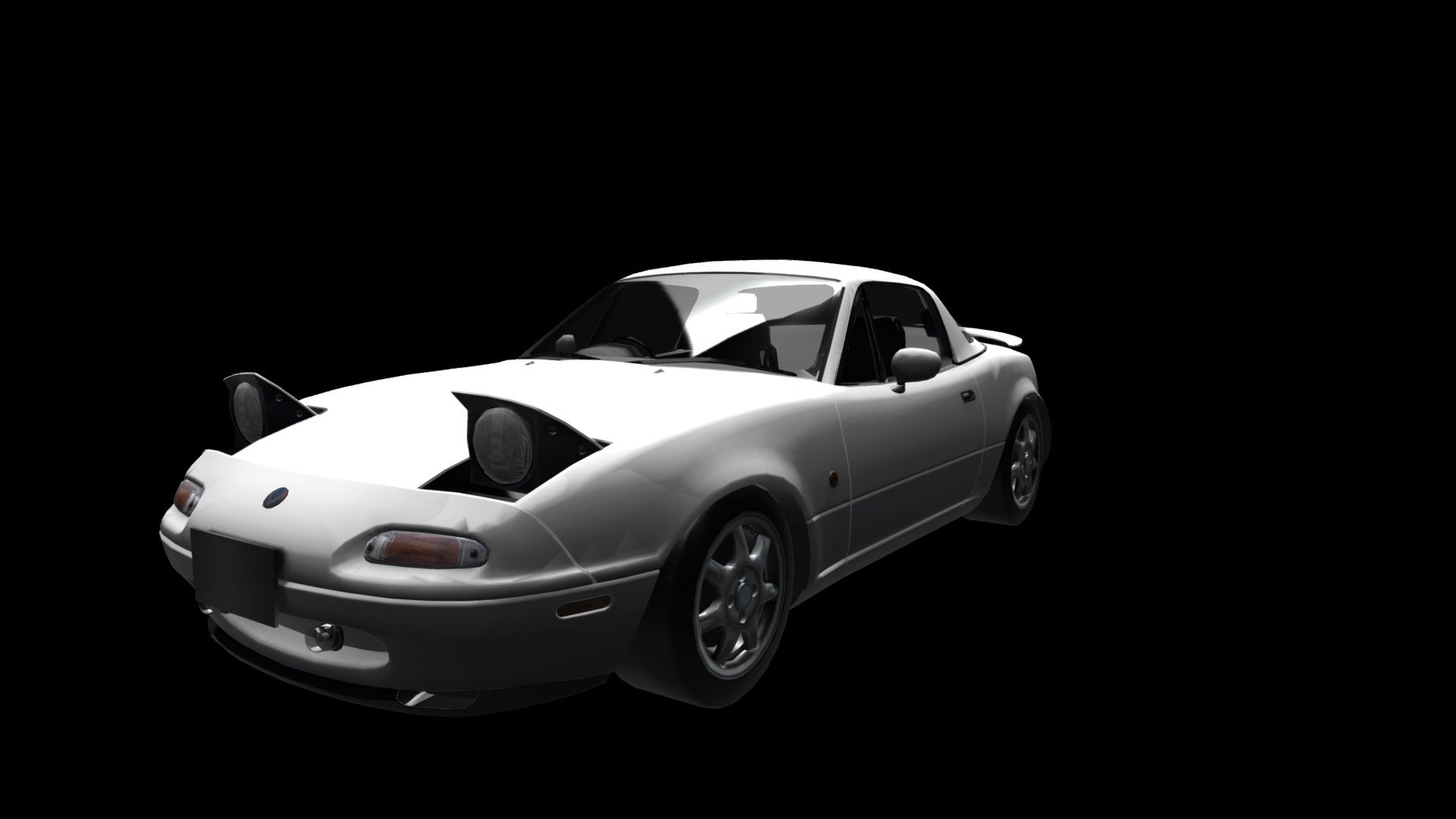
11. **BBR Mazda MX-5 GT270 (2013)**In 2013, Brodie Brittain Racing (BBR) of Brackley, England, introduced the BBR Mazda MX-5 GT270, a limited-edition offering that represented the pinnacle of performance for the NC Miata. Limited to a mere 100 units, this car was an uncompromising demonstration of forced induction expertise, meticulously engineered to transform the already capable 2.0-liter Sport Tech Roadster Coupe into a true giant-killer. It transcended mere tuning, delivering a production-level performance upgrade that few could match, establishing a new benchmark for the NC platform’s power ceiling.
The heart of the GT270’s transformation was an intercooled turbocharger system, coupled with a thoroughly remapped ECU. This comprehensive powertrain overhaul boosted the 2.0-liter engine’s output to an astounding 200 kW (268 bhp), a monumental increase over the standard car’s figures. This surge in power allowed for exhilarating acceleration, with the GT270 capable of reaching 0–97 km/h (0–60 mph) in a blistering 4.9 seconds. Its top speed was electronically limited to 240 km/h (150 mph), ensuring both performance and controlled power delivery.
To complement the immense power, BBR implemented significant suspension upgrades, ensuring the chassis could effectively harness the newfound performance. While specific details beyond “suspension upgrades” are kept proprietary, it is understood that these modifications were essential to maintaining the Miata’s renowned handling characteristics at much higher speeds and g-forces. At its launch, the comprehensive package, including the car itself, was priced at £29,995, and critically, it came with a 12-month warranty, providing buyers with peace of mind for such a highly tuned vehicle.
The BBR Mazda MX-5 GT270 was more than just a powerful Miata; it was a statement of intent. It showcased the NC’s ultimate potential as a formidable performance platform when subjected to expert engineering. For the fortunate few who acquired one, it offered an unparalleled driving experience, blending the Miata’s inherent balance and agility with supercar-baiting straight-line speed, cementing its legacy as one of the most extreme and capable iterations of the third-generation MX-5 ever produced.
Car Model Information: 2023 Mazda MX-5 Miata Club
Name: Mazda MX-5
Manufacturer: Mazda
Aka: unbulleted indent list
Production: 1989–present
Assembly: Hiroshima
Class: Roadster (car),sports car
Layout: unbulleted indent list
Platform: List of Mazda model codes#Model codes
Categories: 1990s cars, 2000s cars, 2010s cars, 2020s cars, All Wikipedia articles in need of updating
Summary: The Mazda MX-5 is a lightweight two-seat sports car manufactured and marketed by Mazda. In Japan, it is marketed as the Mazda Roadster or, previously, as the Eunos Roadster. In the United States it is sold as the Mazda Miata (), and it was formerly marketed under the same name in Canada. The name miata derives from Old High German for “reward”.
Produced at Mazda’s Hiroshima plant, the MX-5 debuted in 1989 at the Chicago Auto Show. It was created under the design credo Jinba ittai, meaning “unity of horse and rider”. Noted for its small, light, balanced and minimalist design, the MX-5 has often been described as a successor to the 1950s and 1960s Italian and British roadsters, with the Lotus Elan serving as a design benchmark.
Each generation is identified by a two-letter code, beginning with the first generation NA. The second generation NB launched in 1998, followed by the third generation NC in 2005, and the fourth generation ND in 2015.
More than one million MX-5s have been sold, making it the best-selling two-seat convertible sports car in history.
Get more information about: Mazda MX-5
Buying a high-performing used car >>>
Brand: Mazda Model: MX-5
Price: $25,996 Mileage: 32,837 mi.

12. **MX-5 25th Anniversary Edition (2014)**As the curtain began to close on the illustrious NC generation, Mazda presented a fitting tribute: the MX-5 25th Anniversary Edition for the 2014 model year. This limited-production run of 1099 units worldwide was designed not only to celebrate a quarter-century of the iconic MX-5 but also to offer a beautifully appointed, collectible variant of the beloved third-generation car. It served as a commemorative capstone, embodying the spirit of the NC’s evolution and its enduring impact on the automotive landscape before the arrival of its successor.
Every 25th Anniversary Edition car was painted in an exclusive and striking Soul Red Metallic, a vibrant hue that perfectly complemented the Miata’s flowing lines. This signature color was elegantly contrasted with Brilliant Black A-pillars, roof panels, and mirror covers, creating a sophisticated and distinctive visual appeal. Unique 25th Anniversary badging further distinguished these special models, subtly signifying their limited production status and their place in the Miata’s storied history.
Inside, the cabin exuded a sense of refined sportiness. Light brown leather seats provided a luxurious touch, while a unique hand-painted dash panel added an artisanal flair to each vehicle. An individually numbered aluminum badge, proudly displayed on the dash, underscored the exclusivity of each unit. Premium amenities included a sophisticated Bose audio system, enhancing the driving experience with superior sound quality, making every journey more enjoyable.
Underneath its celebratory livery, the 25th Anniversary Edition retained the proven mechanicals of the 2.0-liter engine paired with the Power Retractable Hard Top (PRHT), ensuring a reliable and engaging driving experience that had become synonymous with the NC. This edition was a thoughtful blend of aesthetic distinction, premium features, and the cherished driving dynamics that defined the Miata. It offered enthusiasts and collectors a tangible piece of MX-5 history, celebrating the NC’s legacy as a pivotal chapter in the saga of the world’s most popular roadster, before paving the way for the next generation.
Car Model Information: 2023 Mazda MX-5 Miata Club
Name: Mazda MX-5
Manufacturer: Mazda
Aka: unbulleted indent list
Production: 1989–present
Assembly: Hiroshima
Class: Roadster (car),sports car
Layout: unbulleted indent list
Platform: List of Mazda model codes#Model codes
Categories: 1990s cars, 2000s cars, 2010s cars, 2020s cars, All Wikipedia articles in need of updating
Summary: The Mazda MX-5 is a lightweight two-seat sports car manufactured and marketed by Mazda. In Japan, it is marketed as the Mazda Roadster or, previously, as the Eunos Roadster. In the United States it is sold as the Mazda Miata (), and it was formerly marketed under the same name in Canada. The name miata derives from Old High German for “reward”.
Produced at Mazda’s Hiroshima plant, the MX-5 debuted in 1989 at the Chicago Auto Show. It was created under the design credo Jinba ittai, meaning “unity of horse and rider”. Noted for its small, light, balanced and minimalist design, the MX-5 has often been described as a successor to the 1950s and 1960s Italian and British roadsters, with the Lotus Elan serving as a design benchmark.
Each generation is identified by a two-letter code, beginning with the first generation NA. The second generation NB launched in 1998, followed by the third generation NC in 2005, and the fourth generation ND in 2015.
More than one million MX-5s have been sold, making it the best-selling two-seat convertible sports car in history.
Get more information about: Mazda MX-5
Buying a high-performing used car >>>
Brand: Mazda Model: MX-5
Price: $25,996 Mileage: 32,837 mi.
The third-generation Mazda MX-5 Miata, the NC, stands as a testament to thoughtful evolution without sacrificing core principles. From its foundational redesign to the groundbreaking Power Retractable Hard Top and the myriad of special editions and performance concepts, the NC continually pushed boundaries and expanded its appeal. It cemented its place not just as a competent sports car, but as a versatile platform capable of both refined touring and serious track prowess. Its journey, marked by innovation and a dedication to the driving enthusiast, ensures its legacy as a vital and often underestimated chapter in the celebrated history of the Mazda Miata, a true hero from Hiroshima that deserves every bit of its praise.

